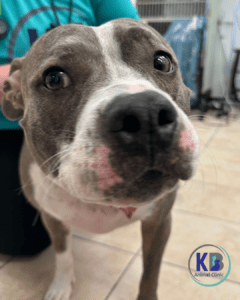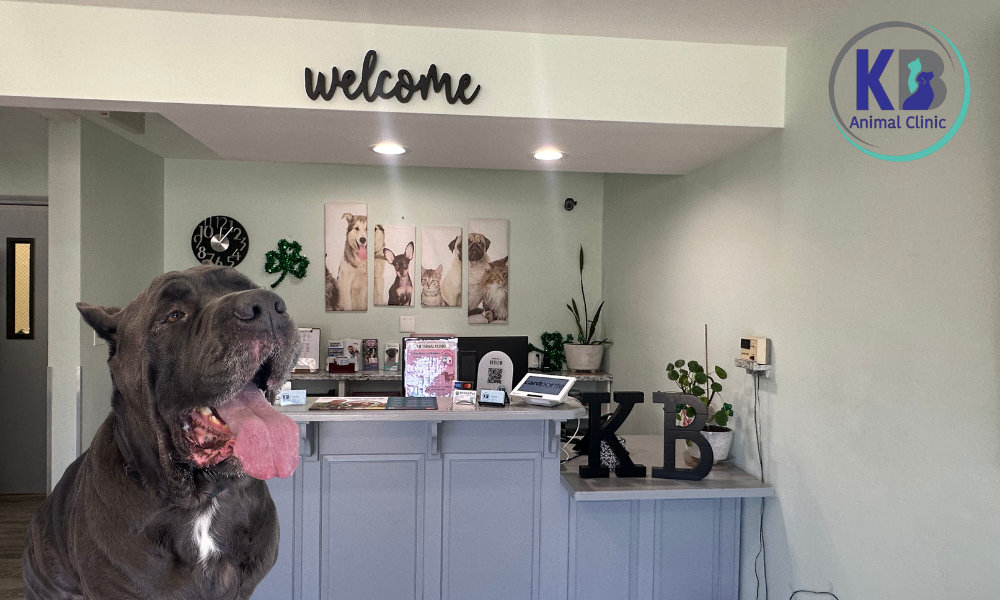Summer is a time for fun in the sun, but it can also pose serious risks for your furry friends—especially when it comes to heatstroke in dogs. As temperatures soar in Lee’s Summit, it’s crucial for every pet owner to understand the dangers of heatstroke and take steps to ensure their pets stay cool and safe. This blog will cover five practical and lifesaving tips to prevent heat-related illnesses and promote summer pet safety.
1. Recognize the Signs of Heatstroke in Dogs
The first step in preventing heatstroke in dogs is knowing the warning signs. Heatstroke occurs when a dog’s body temperature rises above the normal range and the body can’t cool itself efficiently. This condition can lead to organ failure or even death if not treated immediately.
Common symptoms of heatstroke in dogs include:
- Heavy panting
- Rapid heartbeat
- Drooling
- Lethargy or weakness
- Vomiting or diarrhea
- Seizures
- Bright red or pale gums
If you suspect your dog is suffering from heatstroke, move them to a cooler area, offer water, and call your Lee’s Summit Vet, KB Animal Clinic immediately.
2. Never Leave Your Dog in a Parked Car
One of the most dangerous, and unfortunately common, situations that leads to heatstroke in dogs is being left in a parked car. Even on a mild summer day, the temperature inside a car can rise rapidly, creating a deadly environment for pets.
Key facts to remember:
- In just 10 minutes, the temperature inside a vehicle can rise by 20 degrees.
- Cracking a window does not make a significant difference.
- Dogs can suffer irreversible organ damage within minutes.
Always leave your dog at home if you can’t bring them inside with you. It’s simply not worth the risk.
3. Limit Outdoor Activity During Peak Heat
Another important way to avoid heatstroke in dogs is to manage their outdoor time during hot weather. High humidity and direct sunlight can be a dangerous combination, especially during the afternoon hours.
Tips for safer outdoor play:
- Walk your dog early in the morning or later in the evening.
- Stick to shaded paths and grassy areas.
- Bring plenty of fresh water and take breaks in the shade.
As your trusted Lee’s Summit Vet, we recommend testing the pavement with your hand—if it’s too hot for you, it’s too hot for your dog’s paws.
4. Provide Plenty of Water and Shade at Home
Hydration and shade are two key components of summer pet safety. Dogs rely on panting to cool themselves, so access to fresh water is absolutely essential during hot months.
Home safety tips:
- Keep multiple water bowls available and refill them frequently.
- Consider adding ice cubes for a cooling effect.
- Set up shaded areas in your yard or invest in a pet-safe cooling mat.
Preventing heatstroke in dogs at home starts with creating a cool, relaxing environment. Don’t forget that dog houses can trap heat, so they’re not always a safe retreat during summer.
5. Know Your Dog’s Risk Factors
Certain breeds and individual dogs are more susceptible to heatstroke in dogs than others. Being aware of your pet’s specific needs can help you take extra precautions when the temperature rises.
High-risk dogs include:
- Brachycephalic breeds like Bulldogs and Pugs

Heatstroke in Dogs
- Older dogs or puppies
- Overweight dogs
- Dogs with heart or respiratory issues
KB Animal Clinic, a Lee’s Summit vet, can help you understand your dog’s specific vulnerabilities and recommend personalized summer pet safety measures to keep them healthy.
What to Do If You Suspect Heatstroke in Dogs
Despite your best efforts, emergencies can still happen. If your dog shows any signs of heatstroke, it’s important to act fast.
Steps to take:
- Move your dog to a cooler location.
- Wet them with cool (not cold) water.
- Offer small amounts of water to drink.
- Contact KB Animal Clinic or the nearest Lee’s Summit vet immediately.
Time is critical when dealing with heatstroke in dogs, and prompt action can make all the difference.
Final Thoughts on Heatstroke in Dogs
Summer should be a time of joy and adventure for both you and your pets. By staying informed about the risks of heatstroke in dogs and practicing good summer pet safety, you can enjoy the season while protecting your furry family members.
We are always here to help with guidance, check-ups, and emergency care. Don’t hesitate to reach out if you have any concerns about your pet’s health during the warmer months.
Quick Recap: 5 Essential Summer Safety Tips
- Learn the symptoms of heatstroke in dogs
- Never leave your dog in a parked car
- Avoid outdoor activity during peak heat
- Keep your dog hydrated and shaded
- Understand your dog’s specific risk factors
By following these tips, you’re not just preventing heatstroke in dogs—you’re ensuring a safer, happier summer for your beloved pet.

